
 |
 |
| Lycopsid Vascular Axis |
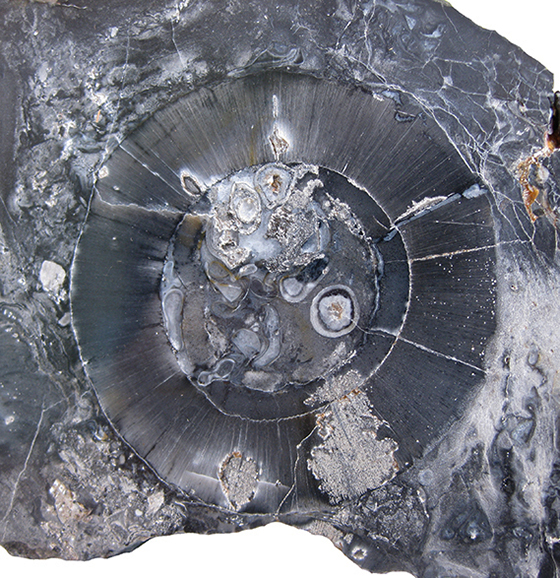 Lepidophloios johnsonii Central Vascular Cylinder 7.5 cm diameter Pennsylvanian; Belden Shale Trout Creek Pass, Chaffee County, CO Colorado School of Mines Geology Museum |
Plant remains of a Lower Pennsylvanian lycopod forest can be found near Trout Creek Pass in central Colorado. Plant remains at Trout Creek include portions of silicified trunks that contain vascular axes. Numerous shale fragments bearing imprints of Lepidodendron and Lepidophloios are associated with the trunk fragments. Fragments of plant axes preserve the pith, primary xylem, secondary xylem, portions of the cortex and periderm. Preservation can be very good; however, the structure is destroyed by hydrofluoric acid because very little organic matter remains. Thus the cellulose peels used for lycopod material in coal balls can not be utilized with the silicified Trout Creek material (Arnold, 1940, p. 31). Silicified axes of L. johnsonii are mineralized with fibrous chalcedony, large intergrown quartz grains, and euhedral quartz crystals (Stein, 1982, p. 1280). The multiple forms of quartz provide evidence that the mineralization of L. johnsonii involved several episodes of silicification (Viney et al. 2019). The mineralized stem section pictured above consists of pith, primary xylem, secondary xylem, and some cortex tissue. The ring-shaped central axis measures approximately 7.5 cm in diameter. The phloem, outer cortex tissue and periderm are not present in this specimen. Arnold noted that the pith is filled with debris and invaded by structures he identified as Stigmaria. Arnold concluded that roots of lycopod trees must have grown around and through plants buried within the soil. A 2019 reinvestigation of the site found that axes are somewhat rare. Furthermore, Stigmaria were not found in the newly collected specimens (Viney et al. 2019). A series of images below "zooms" in on the primary and secondary xylem rings. The first two images were taken with a Canon PowerShot SD770 IS Digital ELPH 10.0 MEGA PIXELS, cropped and resized in Adobe Photoshop CS6. The third image was taken at 50x with a Dino-Lite AD7013 MT 5.0 MP, courtesy of Hugh Lawrence. |
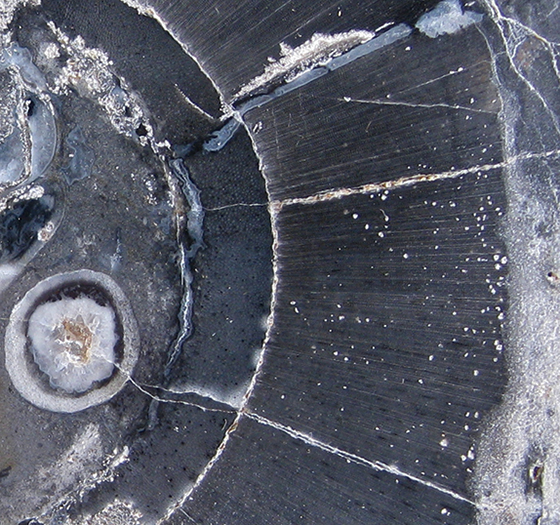 |
In the image above we can see from left to right: pith area filled with debris and invaded by possible Stigmaria, primary xylem ring, secondary xylem ring and inner cortex at the edge of the photo. |
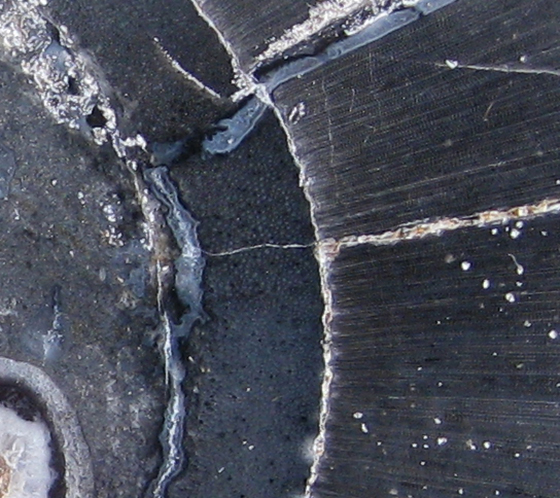 |
In the image above we can see: pith area on the left, primary xylem ring in the center, and secondary xylem ring to the right. |
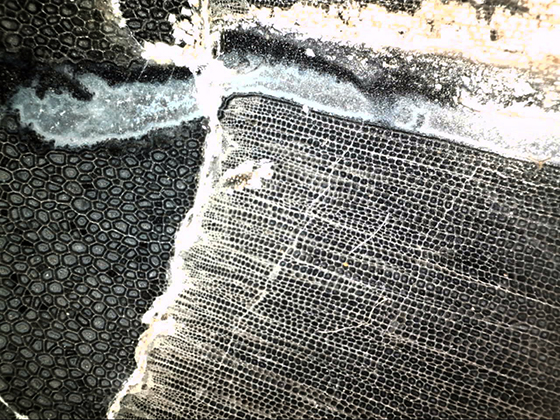 |
In the image above we can see the transition zone between the primary xylem (large metaxylem cells and protoxylem) and secondary xylem (radially aligned tracheids). Lycopod bark impressions associated with the plant axes are pictured below. Bark impressions with leaf scars representing both Lepidodendron and Lepidophloios are easily found. Read the following articles to learn more about this fascinating fossil deposit. A Silicified Carboniferous Lycopsid Forest in the Colorado Rocky Mountains, USA Trout Creek Lycopsid Fossil Forest, Chaffee County, Colorado |
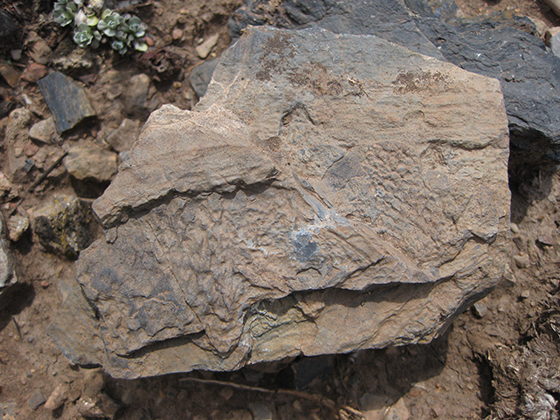 |
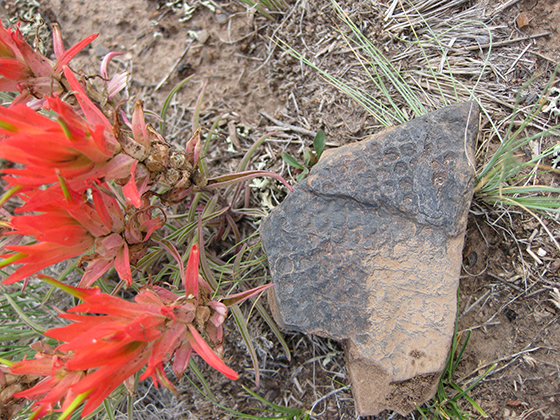 |
Bibliography |
Arnold, C.A. (1940). Lepidodendron johnsonii, sp. nov., from the Lower Pennsylvanian of Central Colorado. Contributions from the Museum of Paleontology, University of Michigan vol 6, no 2, pp. 21-52. DiMichele W.A. (1979). Arborescent lycopods of Pennsylvanian age coals: Lepidophloios. Palaentog. Abt. B vol 171, pp. 57-77. Stein, C.L. (1982). Silica Recrystallization in Petrified Wood. Journal of Sedimentary Petrology, vol 52, no 4. pp. 1277-1282. Viney M., Mustoe, G.E., Hickey, R.D. (2019). A Silicified Carboniferous Lycopsid Forest in the Colorado Rocky Mountains, USA. Geosciences, 9(510): pp 1-18. Viney, M. & Mustoe, G. E. (2022). Trout Creek Lycopsid Fossil Forest, Chaffee County, Colorado. Rocks and Minerals, 97(4): 364-373. |










